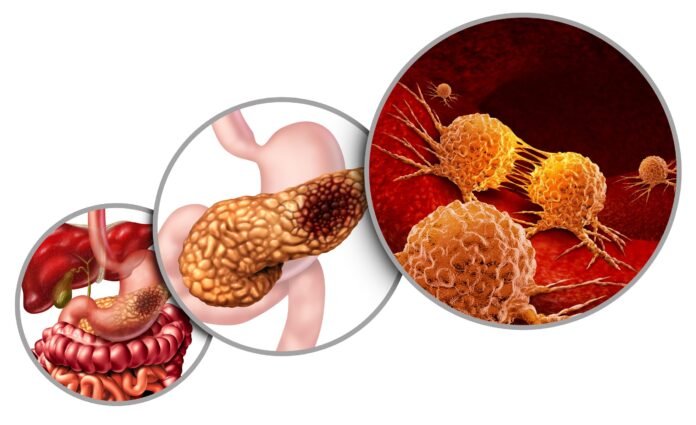Pancreatic cancer is a serious and often life-threatening disease that affects thousands of individuals every year. It has a low survival rate, mainly because it is often diagnosed at an advanced stage. This means that being aware of the signs and symptoms can help detect it early, increasing the chances of successful treatment. These are the ten signs of pancreatic cancer that you should never ignore and what you need to know about this deadly type of cancer.
Understanding Pancreatic Cancer
The pancreas is an essential organ located in the abdomen that plays a crucial role in digestion and hormone production. It is responsible for producing enzymes that help break down food and hormones that regulate blood sugar levels. It also produces insulin, which is needed to convert glucose into energy.
Pancreatic cancer occurs when abnormal cells in the pancreas begin to grow uncontrollably, forming a tumor. The most common type of pancreatic cancer is adenocarcinoma, which accounts for about 95% of all cases. This type usually starts in the ducts that carry digestive juices from the pancreas to the small intestine.
Other, less common types include:
- Neuroendocrine tumors (NETs): These tend to grow slowly.
- Cystic tumors: Usually benign but can become cancerous over time.
It is important to understand the early signs and symptoms of this disease in order to seek medical attention promptly.
10 Signs of Pancreatic Cancer
The reason why pancreatic cancer is often so deadly is because it’s not caught until the later stages of the disease. Symptoms can be subtle or may not appear until the illness has advanced. Knowing the risk factors and symptoms helps you seek medical help early, improving treatment outcomes.
1. Unexplained Weight Loss
Sudden and unintentional weight loss, especially when accompanied by a loss of appetite, can be an early sign of pancreatic cancer.
2. Jaundice
Yellowing of the skin and eyes can occur due to the buildup of bilirubin, a pigment produced by the liver. This can indicate that pancreatic cancer is blocking the bile duct.
3. Abdominal Pain
Chronic or unexplained abdominal pain, which may radiate to the back, can be a sign of pancreatic cancer. The pain may worsen after eating.
4. Digestive Problems
Pancreatic cancer can affect the pancreas’s ability to produce digestive enzymes, leading to:
- Indigestion
- Diarrhea
- Oily or foul-smelling stools
5. New-Onset Diabetes
Pancreatic cancer can disrupt insulin production, resulting in diabetes in individuals who have not previously had the condition.
6. Changes in Stool
Pale, greasy, or floating stools may indicate an issue with the pancreas, which can be a sign of pancreatic cancer.
7. Fatigue
Persistent tiredness or a lack of energy may occur due to anemia or the cancer itself.
8. Back Pain
Constant or progressive back pain can be a sign that pancreatic cancer has spread to the nerves or tissue surrounding the pancreas.
9. Blood Clots
Pancreatic cancer increases the risk of blood clots, which may present as:
- Pain
- Redness
- Swelling
- Warmth in the affected area
10. Gastrointestinal Issues
Persistent nausea, vomiting, or a frequent feeling of fullness after eating small amounts can also signal pancreatic cancer.
Talking to Your Doctor About Pancreatic Cancer and Prevention
If you are experiencing any of the above signs or symptoms, consult your healthcare provider. They can evaluate your symptoms, perform tests, and determine the next steps if pancreatic cancer is suspected.
While there are no guaranteed ways to prevent pancreatic cancer, certain lifestyle choices may reduce your risk:
- Maintain a healthy weight
- Avoid tobacco and excessive alcohol
- Eat a balanced diet rich in fruits, vegetables, and whole grains
- Engage in regular physical activity
- Understand your personal risk factors
Risk Factors for Pancreatic Cancer
You may be at higher risk if any of the following apply:
- Age: Most cases are diagnosed in people over 60.
- Smoking: Responsible for about 20% of all pancreatic cancer cases.
- Diabetes: Increases your risk by about 50%.
- Obesity: Being overweight raises risk by about 20%.
- Family History: Having a close relative with pancreatic cancer, or genetic conditions such as BRCA1/BRCA2 mutations or multiple endocrine neoplasia.
- Ethnic Race: African Americans and people of Ashkenazi Jewish descent are more prone to developing pancreatic cancer.
- Chemical Exposure: Working with dry cleaning or metalworking chemicals may increase risk.
- Gender: Men are more likely than women to develop pancreatic cancer.
The Bottom Line
Pancreatic cancer is a devastating disease, but awareness of its signs and symptoms can make a significant difference in early detection and treatment.
Being familiar with the ten signs of pancreatic cancer discussed in this article can potentially save lives. If you or a loved one experience any of these symptoms, consult a healthcare professional for proper evaluation and guidance.





